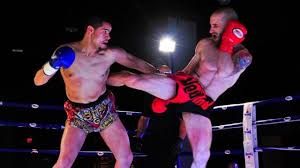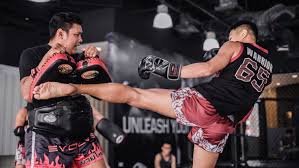(QUOTE="gpseymour, post: 2032709, member: 27826"]I said "difference in application". Meaning, you're applying it differently.,)
I think this application definition might have swerved into personal semantics. I view application as what I want the technique to do, like do I want it to bridge or do I want it to break something. Where the technique bridges (over or under) or where it breaks does not change its application. But I can completely see where you are coming from if your saying where the technique lands changes its application. Just a different definition.
I don't think it's an outrageous claim to make that a system can contain a technique, strategy or application that one single instructor or maybe a couple of instructors don't know or have forgotten.
If someone is teaching it in the system elsewhere I don't think you can argue in good faith that it isn't in the system because the aforementioned instructors don't teach it.
It kinda feels that your arguing that a martial system should be limited to what only one particular instructor (or set of instructors) teach/es, and anything outside of that is not in the system. I may have misunderstood, but if that is what your arguing i have to say I do disagree with that.
I see that you mentioned different versions but I am confused as to what you might mean by system, each version is its own system maybe? But if that's the case if one instructor teaches one application of the technique and another teachers two, whose is the system? both separate systems?, the one with more? or if I'm the student of the instructor who teacher one maybe his is the "true" system?
I think this application definition might have swerved into personal semantics. I view application as what I want the technique to do, like do I want it to bridge or do I want it to break something. Where the technique bridges (over or under) or where it breaks does not change its application. But I can completely see where you are coming from if your saying where the technique lands changes its application. Just a different definition.
I don't think it's an outrageous claim to make that a system can contain a technique, strategy or application that one single instructor or maybe a couple of instructors don't know or have forgotten.
If someone is teaching it in the system elsewhere I don't think you can argue in good faith that it isn't in the system because the aforementioned instructors don't teach it.
It kinda feels that your arguing that a martial system should be limited to what only one particular instructor (or set of instructors) teach/es, and anything outside of that is not in the system. I may have misunderstood, but if that is what your arguing i have to say I do disagree with that.
I see that you mentioned different versions but I am confused as to what you might mean by system, each version is its own system maybe? But if that's the case if one instructor teaches one application of the technique and another teachers two, whose is the system? both separate systems?, the one with more? or if I'm the student of the instructor who teacher one maybe his is the "true" system?
Last edited:


